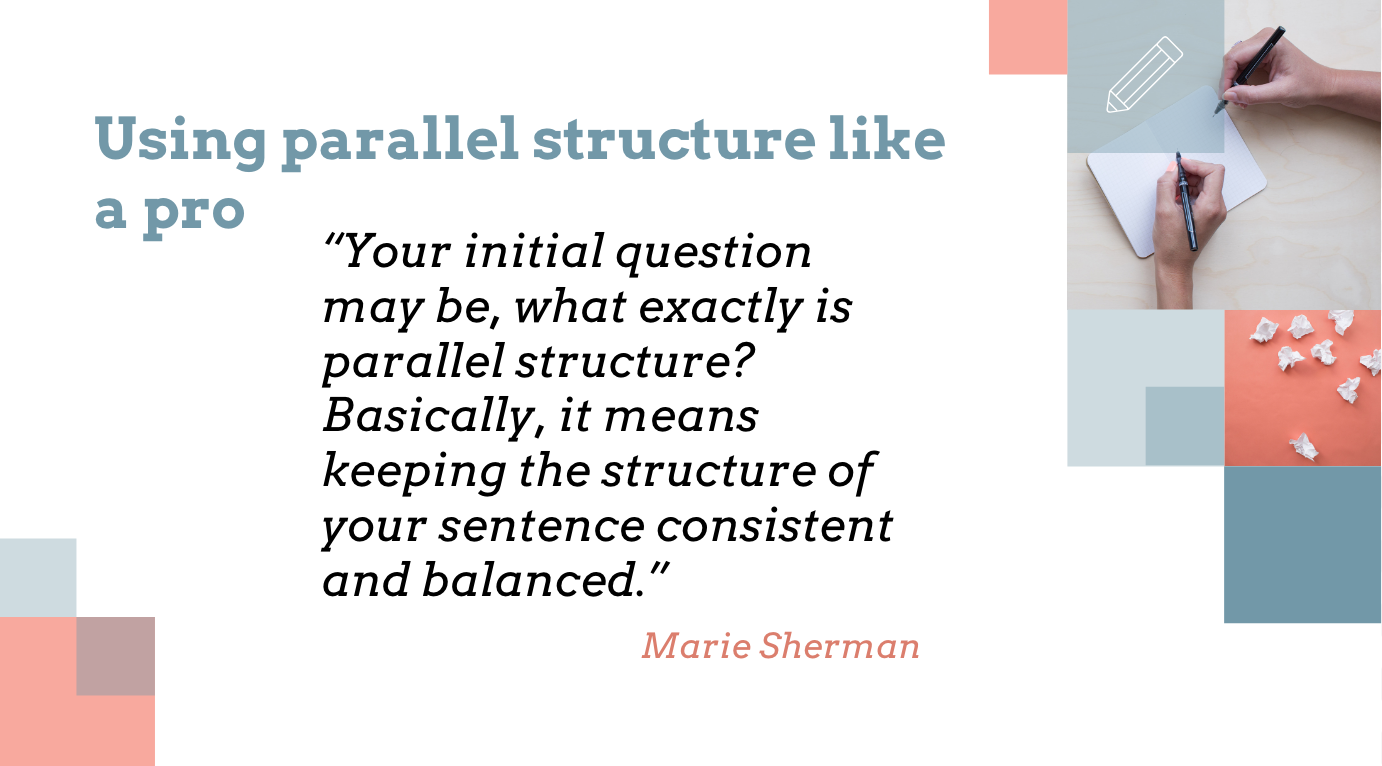Using parallel structure like a pro
by Marie Sherman
One of the most fundamental attributes of good writing is having clear, effective sentences. Strong sentences are made up of a few important elements, but I’m going to focus on just one: parallel structure.
Your initial question may be, what exactly is parallel structure? Basically, it means keeping the structure of your sentence consistent and balanced. Your objective is to put similar grammatical ideas in similar grammatical form—noun forms, verb tenses, etc. What this looks like in practice can be broken up into different categories.
First of all, parallel structure is used when writing about items in a series. Whether it is a noun, adjective, or a verb, it is important to use the same structure for each item.
For example, someone may write:
My best friend loves skiing, playing outside, and to write.
This sounds awkward and clunky. To make the sentence parallel, you must write all the verbs in the same form:
My best friend loves skiing, playing outside, and writing.
This sounds much better because all the verbs now end in -ing. You could also fix this scenario like this:
My best friend loves to ski, to play outside, and to write.
Now all the verbs are in the infinitive form.
Another occasion to be aware of using parallel structure is when you use a coordinating conjunction (**quick refresher: the coordinating conjunctions are for, and, nor, but, or, yet, so**). This means the subjects between on either side of the coordinating conjunction should use the same structure.
For example:
Principia’s Tutor Cafe is a wonderful place to develop writing techniques and practicing research skills.
Once again, this sentence sounds awkward because the verbs are not parallel. (You might be tricked by the -ing on “writing,” but that’s just a noun form.) Let’s try this:
Principia’s Tutor Café is a wonderful place to develop writing techniques and practice research skills.
Now “develop” and “practice” are parallel, and the sentence works!
The final case to use parallel structure is in the case of correlative conjunctions (**quick refresher #2: these are conjunctions that connect equal grammatical elements, such as both…and…; either…or…; not only…but also; etc.). These come into play with parallel structure because you must make sure that the grammatical structure of the sentence remains consistent from start to finish.
Here’s an example:
The WISE workshops are not only a place to get help with assignments, but also work productively.
This sentence sound incomplete because it’s not parallel! Let’s fix that:
The WISE workshops are not only a place to get help with assignments, but also to work productively.
“To get” and “to work” balance each other out.
Hopefully those examples clear up any confusion you had about parallel structure. Now you can write grammatically balanced sentences with ease! Remember, if you have any more questions don’t hesitate to stop by the Tutor Café and ask!
Marie Sherman is a junior at Principia College studying education and global studies. She loves running, dancing, painting and orangutans.

